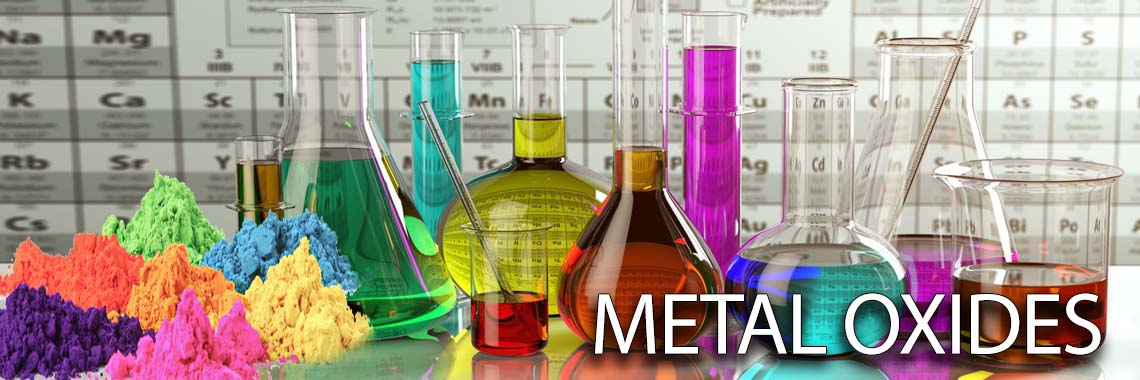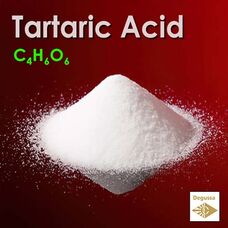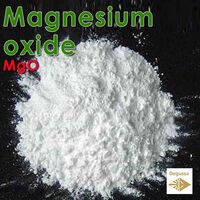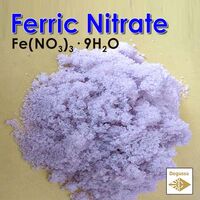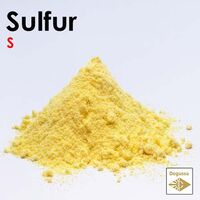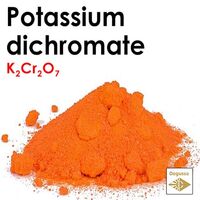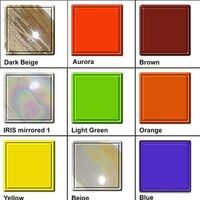How is tartaric acid used in everyday life? Can you eat tartaric acid? Is tartaric acid the strongest antioxidant
C4H6O6
Tartaric acid is a white, crystalline organic acid that occurs naturally in many fruits, most notably in grapes, but also in bananas, tamarinds, and citrus. Its salt, potassium bitartrate, commonly known as cream of tartar, develops naturally in the process of fermentation. It is commonly mixed with sodium bicarbonate and is sold as baking powder used as a leavening agent in food preparation. The acid itself is added to foods as an antioxidant E334 and to impart its distinctive sour taste. Naturally occurring tartaric acid is a useful raw material in organic chemical synthesis. Tartaric acid is an alpha-hydroxy-carboxylic acid, is diprotic and aldaric in acid characteristics, and is a dihydroxyl derivative of succinic acid.
More about Zinc Acetate can be found on Wikipedia
Tartaric acid in wine
Unpurified potassium bitartrate can take on the color of the grape juice from which it was separated. Tartaric acid may be most immediately recognizable to wine drinkers as the source of "wine diamonds", the small potassium bitartrate crystals that sometimes form spontaneously on the cork or bottom of the bottle. These "tartrates" are harmless, despite sometimes being mistaken for broken glass, and are prevented in many wines through cold stabilization (which is not always preferred since it can change the wine's profile). The tartrates remaining on the inside of aging barrels were at one time a major industrial source of potassium bitartrate.
Tartaric acid plays an important role chemically, lowering the pH of fermenting "must" to a level where many undesirable spoilage bacteria cannot live, and acting as a preservative after fermentation. In the mouth, tartaric acid provides some of the tartness in the wine, although citric and malic acids also play a role.
Applications
Tartaric acid and its derivatives have a plethora of uses in the field of pharmaceuticals. For example, it has been used in the production of effervescent salts, in combination with citric acid, to improve the taste of oral medications.
Formula: C4H6O6
Molecular Weight: 150.087 g/mol
Form: White solid
CAS Number: 87-69-4
E number: E334
Density: 1.737 g/cm³
Synonyms: 2,3-Dihydroxysuccinic acid, Threaric acid, Racemic acid, Uvic acid, Paratartaric acid, Winestone
Tartaric acid is often used as an acidulant in grape- and lime-flavored beverages, gelatin desserts, jams, jellies, and hard sour confectionery.
- Brand: Degussa
- Product Code: Oxide - Tartaric Acid
- SKU: C4H6O6
- Availability: 456
-
0.59€
Available Options
Related Products
Magnesium oxide - Magnesium(II) oxide - chemical compound
MgO Magnesium oxide (MgO), or magnesia, is a white hygroscopic solid mineral that occurs naturally as periclase and..
0.99€
Iron(III) nitrate - Ferric nitrate Nonahydrate - Ferricum Nitricum
Fe(NO3)3 Ferric nitrate is a chemical compound with the formula Fe(NO3)3. It is a salt composed of iron..
1.19€
SULFUR - Unlocking the Power of Sulphur Powder: Applications, Benefits, and Safety
S Sulfur is a chemical element with the symbol "S" and the atomic number 16. It is a non-metal and is found in the ..
0.99€
Potassium dichromate - Potassium bichromate - K2Cr2O7
K2Cr2O7 Potassium dichromate, K2Cr2O7, is a common inorganic chemical reagent, most commonly used as an oxidizing a..
3.99€
Tags: oxide

